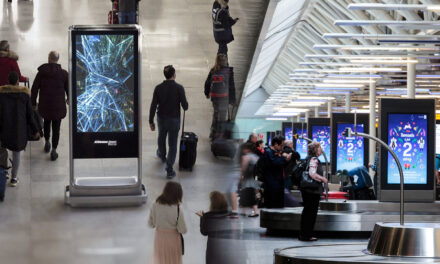In this interview, Alexandra Lowes, VP, Client Engagement and Growth APAC for Finecast, talks about actions advertisers in SEA can take to make the most of their digital ad efforts as the holiday season gets closer.
Southeast Asia’s digital retail ad spending is on the rise, what do you think is the reason this is happening?
Covid has increased consumers’ reliance on online shopping, and this habitual behaviour has impacted consumers across Southeast Asia, forming new habits across the region’s vast array of online shopping platforms.

According to GroupM’s TYNY eCommerce & Retail Media Forecast, global retail media advertising revenue was estimated at $88 billion in 2021, and will reach $101 billion this year. This comes up to 18% of global digital advertising and 11% of total advertising. The forecast expects retail media advertising to increase approximately 60% by 2027.
This exceeds the growth rate expected for all digital advertising, which means that retail media will account for an increasing share of digital ad revenue over the next five years. In Southeast Asia, we will also see a similar growth trajectory.
Retail media has become an important line item on many marketers’ budgets due to the allure of first-party data which enables purchase-based targeting and closed loop measurement.
Another major factor fueling the growth of retail media can be attributed to the expansion of use cases. Traditionally, the majority of ad inventory lived on retailers’ owned platforms; however, we are increasingly seeing retailers open up “off-site” opportunities to additional inventory which offer brands additional flexibility.
Decoupling retail data from inventory could lead to more opportunities for platforms to sell impressions to non-endemic marketers. The greater participation of non-endemic brands as well as typical retail brands are driving the growth of retail media.
How can marketers increase brand awareness to better reach their target audience as the holiday season is approaching?
To drive sales conversions during holiday seasons, it is important to understand the mindset of customers during this festive window. Mega Day sales campaigns will be rampant across eCommerce platforms and online retail sites; during this season, consumers will be hunting for deals which makes them less interested in learning about the brand story.
Many brands are vying for consumer attention which is extremely short-lived. Customers are constantly scanning the marketplace for the best deals so it will be helpful for brands to create compelling content like promotions, bundle deals, online exclusive products, free shipping, and other enticing offers.
From the point of discovery to check-out, customers are susceptible to micro influences across the funnel that can make or break a sale. It is vital to design a holistic marketing strategy that involves activating paid media, driving the traffic to a well-designed shopfront, and carefully plan for total performance across all channels.
Speaking of cross-channel performance – marketers can take advantage of the connected TV space which is relatively uncluttered compared to some traditional linear TV environments.. Newer CTV environments have fewer ads in some ad load heavy markets, which is a huge advantage for brands trying to break through.
Overall, TV audiences remain strong, but traditional linear TV audiences are declining as viewers migrate to connected TV and device environments, implying that OTT (Over-the-top) streaming content viewership is thriving. Throughout the pandemic, an Ampere Analysis’ report suggests that OTT viewership in Southeast Asia has grown by 54% over the past three years. However, growth is still predicted to continue, rising by 22% over the following three years.
Marketers should also be prioritising audience strategy. Budgets are under pressure as we face strong economic headwinds, which necessitates greater effort in audience segmentation to ensure that your creative is reaching the audiences you want to engage with. One of the last channels to go through a digital transformation is TV, and it now means broadcast brand building mediums combined with the precision of data.
How can marketers better prepare for the upcoming holiday season given the current CTV trends? What opportunities do marketers have?
Campaigns that build brands also build businesses. It is critical for advertisers to drive brand awareness because people will search for brands that they are already familiar with.
This is significant because data shows that brand building is more important than ever for online commerce destinations because there are fewer opportunities for in-store experiences and the need to compensate for this through other mediums grows.
The good news is that audiences for connected TV are rapidly expanding throughout Southeast Asia, as evidenced by the previously mentioned report.
The best of TV and digital are made possible by connected TV advertising environments. Many marketers are accustomed to making huge investments in TV commercial productions, however addressable TV formats have the potential to be both more effective and have a quicker route to market, which is a very alluring proposition for many brands. For marketers looking to boost sales, adding shoppable ads with customised in-location messaging or QR codes can be a great choice to shop instantly, too.
What should brands keep in mind if they want to tap into addressable TV opportunities as engagement usually skyrockets during peak shopping season?
With more competition for share of mind, marketers must create more distinctive assets that are easily recognized in crowded environments and aid in ad message recall – especially during mega day sales events.
According to GroupM’s Consumer Eye report, 48% of people shop in-store first before shopping online, while 52% shop online first. In addition, 43% of APAC consumers recall seeing advertisements prior to making a purchase, providing a large number of people to influence and cut through ad clutter.
At the end of the day, marketers should keep in mind that localised targeting within the connected TV environment can stimulate demand in a specific area. Shopping occurs across channels, and after a period of being only online, it is now transient between the two channels once more.
Therefore in order for marketers to leverage peak shopping periods, they must keep in mind that the ads consumers are exposed to, leave a lasting impact in their minds.
During this season, operational excellence also plays a critical role in sales conversions so brands should make sure that functionalities such as customer service (live chats), inventory and stock availability as well as fulfilment and delivery are well-oiled and in sync across all departments.
How can brands capitalise on the addressable TV advertising opportunity as the number of CTV viewers are growing in tandem with digital retail ad spending in this region?
When it comes to e-commerce brands, word of mouth is undoubtedly the most influential factor, followed by TV as the preferred media channel, with 42% of online shoppers and 20% of shoppers overall saying that TV provides a positive impression.
Advertisers should be able to utilise data to gain insights into audience preferences. They create accurate, detailed buyer personas based on their understanding of the target audience’s needs, interests, and pain points. These assist them in developing an appropriate plan that aligns with the audience’s behaviours and characteristics.
Creating a more targeted and relevant ad that is directed to the right consumers is also a viable option for advertisers looking to capitalise on the addressable television advertising opportunity and not to fall behind the curve. Using the right platform as a powerful channel to help deliver business goals, advertisers can directly connect to business outcomes by nourishing the brand funnel with new, fresh opportunities, and increasing acquisition and retention rates.



















